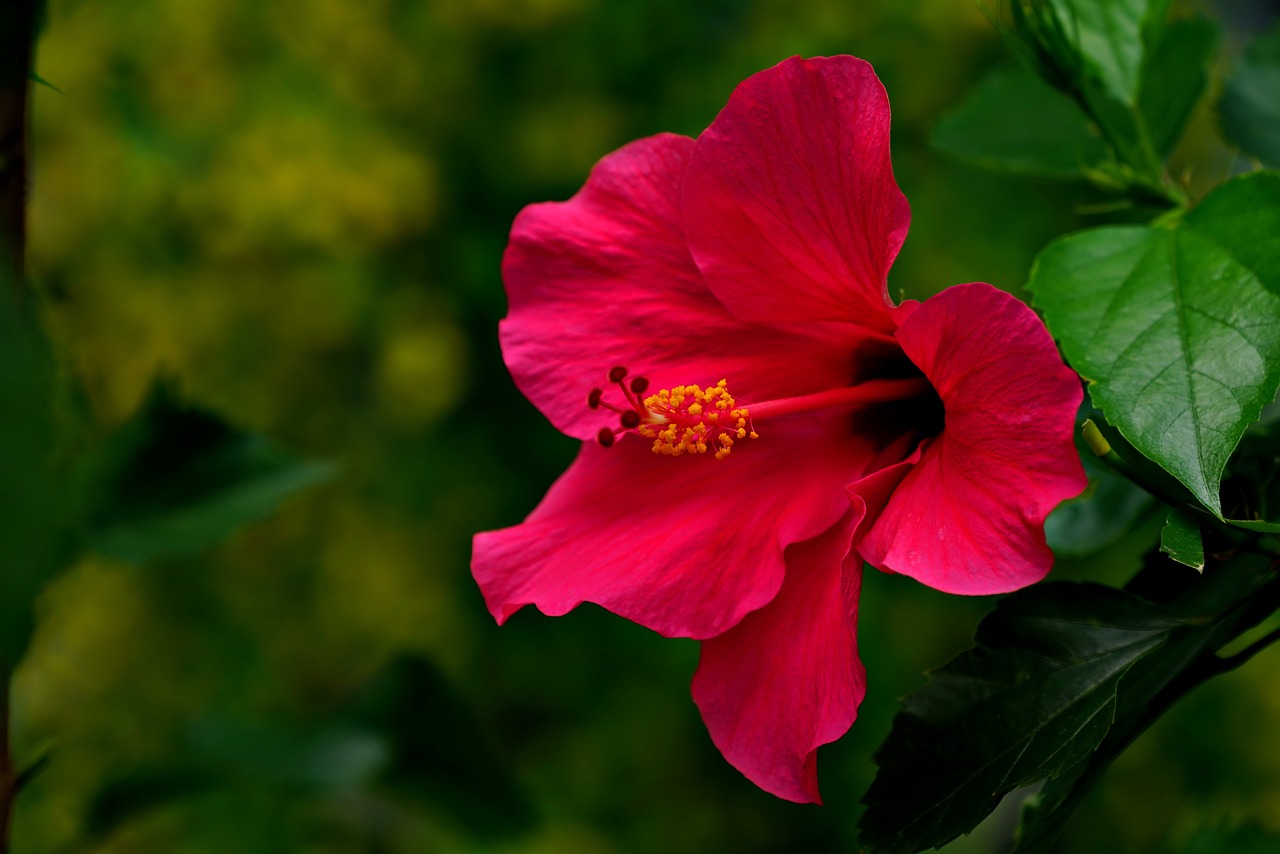
Few flowers capture the essence of summer quite like the hibiscus. With their vibrant blooms in fiery reds, sunshine yellows, and captivating pinks, they transform any space into a tropical paradise. But for beginners, the prospect of caring for these exotic beauties can seem daunting.
This comprehensive guide will equip you with the knowledge to cultivate a thriving hibiscus and witness its magnificent floral display.
Setting the Stage: Location, Location, Location!
Just like us humans, hibiscus plants have their preferences. Understanding their ideal environment is the first step to success.
- Sunlight Superstar: Hibiscus crave sunshine! Aim for at least 6-8 hours of direct sunlight daily. If you live in particularly hot regions, dappled afternoon shade might be beneficial to prevent scorching.
- Temperature Talk: These tropical natives thrive in warm climates. Ideally, maintain temperatures between 65-85°F (18-29°C). If you live in cooler zones, consider container planting to bring your hibiscus indoors during winter.
Potted Paradise or Grounded Grandeur?
The decision of planting your hibiscus in the ground or a container depends on your climate and available space.
- Garden Glory: If you reside in a frost-free zone (USDA hardiness zones 9-11), planting your hibiscus directly in the ground allows for maximum growth and a natural look. Choose a well-draining spot with ample sunlight.
- Container Comfort: For colder climates or limited space, container planting is a perfect solution. Select a pot with drainage holes at least one size larger than the root ball. Opt for a high-quality potting mix specifically formulated for flowering plants.
Nurturing Your Hibiscus: A Recipe for Success
Now that your hibiscus has found its happy place, let’s delve into the essential care practices.
- Watering Wisdom: Hibiscus plants enjoy consistently moist soil, but not soggy. The key is finding the balance. Stick your finger into the top inch of soil – if it feels dry, it’s watering time! During hot summer months, you might need to water daily, while cooler periods require less frequent watering. Remember, underwatering is preferable to overwatering, which can lead to root rot.
- Feeding Frenzy: Regular fertilization fuels vibrant blooms. During the growing season (spring and summer), feed your hibiscus a balanced fertilizer formulated for blooming plants, following the product’s instructions. Avoid over-fertilizing, which can cause stunted growth or leaf burn.
- Pruning Prowess: Regular pruning not only maintains a neat and tidy plant but also encourages more blooms. The best time to prune is in early spring before new growth appears. Use sharp, sterilized pruners to remove dead, diseased, or crossed branches. You can also trim back leggy growth to promote bushier, more compact plants.
Common Hibiscus Hiccups: Diagnosis and Solutions
Even the most attentive plant parent might encounter occasional challenges. Here’s a quick guide to identify and address some common hibiscus issues:
- Drooping Leaves and Wilting: This usually indicates underwatering. Give your hibiscus a thorough drink and adjust your watering schedule to ensure consistent moisture.
- Yellowing Leaves: Several factors can contribute to yellowing leaves. Nutrient deficiency, excessive sunlight, or even pests like aphids could be culprits. Check for signs of pests and treat accordingly. If the issue persists, consider fertilizing with a balanced fertilizer.
- Bud Drop: This can be a disappointment, but fret not! Bud drop often occurs due to stress factors like sudden temperature changes, lack of water, or nutrient deficiencies. Ensure your hibiscus is receiving proper care, and the blooms should return soon.
Bonus Blooms: Extra Tips for a Thriving Hibiscus
- Mulch Magic: Apply a layer of mulch around the base of your hibiscus plant to retain moisture, regulate soil temperature, and suppress weeds.
- Deadheading Delights: Regularly remove spent blooms to encourage further flower production. Simply pinch off the wilted flowerhead just above the next set of leaves.
- Pest Patrol: Keep an eye out for common pests like mealybugs, aphids, and scale. Insecticidal soap or neem oil sprays are effective remedies for most infestations.
